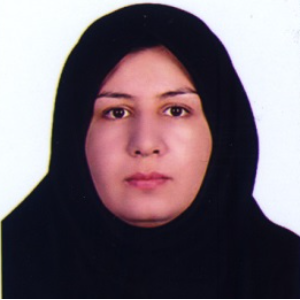Title : Aptamer discovery using evolutionary mimicking algorithm: A smart approach toward food safety biosensing
Abstract:
While antibodies have become the most popular recognition elements in biosensor words for four decades but it is difficult to produce monoclonal antibody towards many food contaminants such as mycotoxins, antibiotics and heavy metals. Given the practical advantages over analogous antibody, aptamer have emerged as a potent rival with high binding affinity and specificity towards a broad range of targets regardless of their immunogenicity. Aptamers are single-stranded oligonucleotides that can be selected through an in vitro selection process called SELEX (Systematic Evolution of Ligands by EXponential enrichment). Regarding to the low cost, ease of synthesis and modification, aptamers are attractive candidates to develop aptasensors especially for small and non-immunogenic contaminants in food and agricultural products. Despite this potential, high functional aptamers selected through SELEX procedure are relatively few due to the technical challenges of aptamer development for small molecule targets. Difficulties in aptamer development for small hazardous compounds have constituted major bottlenecks for acceptance and commercialization of their biosensing platforms. To overcome the challenges, experimental findings can be combined to in silico approaches to refine the affinity and specificity of the selected aptamers. Design of virtual nucleic acid libraries using evolutionary mimicking algorithms and their screening via computational simulations techniques facilitate the selection of high functional aptameric probes in a cost and time effective way. Computational simulation studies can be considered as reliable and green solutions for hazardous binding aptamers discovery through sequence and scaffold optimization. Design and engineering of high functional probes via in silico studies could open a new and much-needed avenue for aptamer engineering researches in affordable manner.
Audience Take Away Notes:
- The audience will be familiar with the evolutionary algorithms and computational simulation studies in aptamer design and their optimization to develop various biosensing platforms for small hazardous compound monitoring in agriculture and food products
- Probe design using in silico strategies will provide the possibility of biosensor development in a cost and time-effective way that can be exploited by researchers and companies active in contaminant monitoring in the food industry
- Yes, sure, this research offers that other faculty could use to expand their research or teaching
- Yes, these findings highlighted the reliable and robust application of computational simulation studies for novel small binding aptamer development and consequently open up a much-needed avenue to design various aptasensing platforms in green and cost effective ways
- Regarding to the high consistency between our experimental and in silico findings, aptamer engineering through integrated evolutionary mimicking algorithm and computational studies sequence can be considered as a new and promising research field for novel small binding aptamer development. Low-cost integration of the newly designed probes as recognition elements in existing aptasensing platforms allow designing various novel aptasensor for small molecule target monitoring in a green way
- List all other benefits
- Cost and time effective designing of new and high functional aptamer are possible without experimental materials and equipment
- This strategy can be exploited for design and improving other recognition elements or enzyme binding site as well



